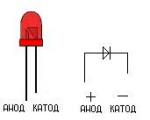How can I tell if my traffic is being intercepted? Wireshark (network sniffer) Examining the contents of packets
Each of the ][ team has their own preferences regarding software and utilities for
pen test. After consulting, we found out that the choice varies so much that you can
make a real gentleman's set of proven programs. On that and
decided. In order not to make a combined hodgepodge, we divided the entire list into topics - and in
this time we'll touch on utilities for sniffing and packet manipulation. Use on
health.
Wireshark
netcat
If we talk about data interception, then network miner take it off the air
(or from a pre-prepared dump in PCAP format) files, certificates,
images and other media, as well as passwords and other information for authorization.
A useful feature is the search for those data sections that contain keywords
(eg user login).
Scapy
Website:
www.secdev.org/projects/scapy
Must-have for any hacker, which is the most powerful tool for
interactive packet manipulation. Receive and decode the most packets
various protocols, respond to a request, inject a modified and
hand-made package - everything is easy! With it, you can perform a whole
a number of classic tasks like scanning, tracorute, attacks and detection
network infrastructure. In one bottle, we get a replacement for such popular utilities,
like: hping, nmap, arpspoof, arp-sk, arping, tcpdump, tetheral, p0f etc. At that
same time Scapy allows you to perform any, even the most specific
a task that will never be able to do already created by another developer
means. Instead of writing a whole mountain of lines in C, so that, for example,
generate the wrong packet and fuzz some daemon, it's enough
throw a couple of lines of code using Scapy! The program has no
graphical interface, and interactivity is achieved through the interpreter
Python. Get used to it a little, and it will not cost you anything to create incorrect
packets, inject the necessary 802.11 frames, combine different approaches in attacks
(say ARP cache poisoning and VLAN hopping), etc. The developers insist
on the fact that the capabilities of Scapy are used in other projects. Connecting her
as a module, it is easy to create a utility for various kinds of local research,
search for vulnerabilities, Wi-Fi injection, automatic execution of specific
tasks, etc.
packeth
Website:
Platform: *nix, there is a port for Windows
An interesting development that allows, on the one hand, to generate any
ethernet packet, and, on the other hand, send sequences of packets to
throughput checks. Unlike other similar tools, packeth
It has GUI, allowing you to create packages in the most simple way
form. Further more. Especially worked out the creation and sending
packet sequences. You can set delays between sending,
send packets at maximum speed to test throughput
section of the network (yeah, this is where they will ddos) and, what is even more interesting -
dynamically change parameters in packets (for example, IP or MAC address).
Methods for intercepting network traffic
TCP connection interception
Conclusion
This lesson describes network hacking technologies based on the interception of network packets. Hackers use such technologies to sniff network traffic to steal valuable information, to intercept data for the purpose of a man-in-the-middle attack, to intercept TCP connections, allowing, say, to spoof data, and to perform other equally interesting actions. Unfortunately, most of these attacks in practice are implemented only for Unix networks, for which hackers can use both special utilities and Unix system tools. Windows networks seem to be bypassed by hackers, and we are forced to limit our description of data interception tools to sniffer programs designed for trivial sniffing of network packets. However, one should not neglect at least the theoretical...
0 0
You will need
Comm Traffic utility; - computer with Windows OS.
Instruction
Download the CommTraffic program from the developer's site and install it according to the instructions.
Set your network options in CommTraffic before you get started. To do this, run the setup wizard. Click on the "Settings" button located in the menu, then click on the "Master" button located on the "Network" -> "Master" page.
Verify that a connection is established between the CommTraffic Console and the CommTraffic Service. Then click the "Next" button in the welcome window and select the correct network configuration in the "Network setup" screen.
If your computer is not connected to a local network and you have a modem (dial-up) connection to the Internet, then select the "standalone computer" option. If your computer is connected to the Internet via a local network, then select "This computer is part of the local network." Press the "Next" button to proceed to the selection screen...
0 0
Administration Linux systems. Interception of network traffic
Chapter 23
A network administrator should be able to use a sniffer such as wireshark or tcpdump to diagnose network problems.
The student will also often have to resort to using a sniffer in order to understand the principles of the functioning of networks. This chapter describes the appropriate techniques for capturing network traffic.
23.1. wireshark app
23.1.1. Installing wireshark
This example shows the command to install wireshark applications on distributions that use .deb software packages (including Debian, Mint, Xubuntu, and other distributions).
[email protected]:~# Reading package lists Done Building dependency tree Reading information about...
0 0
IRIS belongs to the class of sniffer programs that allow you to intercept "foreign" network traffic. In normal operation, the NIC (and its software) receive frames that are addressed by its MAC address or are Broadcasts that have the hexadecimal value FFFFFFFFFFFF in the MAC address field. Sniffers, on the other hand, put it into the so-called "promiscuous mode", when all frames are received, regardless of where they are addressed. Thus, it is possible to collect and analyze all network traffic on the selected network adapter (or controller remote access). If the network is built using (rarely, but it happens) "hubs" (Hub), then a computer with IRIS can intercept all traffic on the collision network segment. Once installed, IRIS is ready to go, but I recommend making some tweaks by selecting "Tools -- Settings -- Miscellaneous" to increase the packet capture buffer size (default...
0 0
Network packet analyzers
Sergey Pakhomov
How packet sniffer works
Sniffer Limitations
Overview of Software Packet Sniffers
Ethereal 0.10.14
Iris Network Traffic Analyzer4.07
Network packet analyzers, or sniffers, were originally developed as a means of solving network problems. They are able to intercept, interpret and save packets transmitted over the network for further analysis. On the one hand, it allows system administrators and technical support engineers to monitor how data is transferred over the network, diagnose and fix problems that arise. In this sense, packet sniffers are a powerful tool for diagnosing network problems. On the other hand, like many other powerful tools that were originally intended for administration, over time, sniffers have been used for completely different purposes ....
0 0
Hello friends.
Sometimes it becomes necessary to analyze the traffic of a certain mobile application. It is often transmitted over HTTP(S) to prevent interception and modification of transmitted data (however, as you will see below, this does not always help).
This note will describe the interception of traffic, including HTTPS, bypassing SSL and Certificate Pinning (which does not allow you to simply add your certificate by replacing a legitimate one), for example, Twitter, Facebook.
What it might be useful for:
Learn how a particular service works, understand how an undocumented API works, cheat in a game, or make the application consider itself bought.
Well, or just convenient to debug your applications.
The choice is yours
To intercept application traffic with the server, you will need:
1) Any Apple device with IOS 6-8.x jailbroken (to intercept HTTPS, to intercept HTTP traffic...
0 0
In this topic, I will tell you how to intercept part of the traffic going through the router (including wi-fi). The attack technique is ARP-spoofing.
We need the free Cain&Abel sniffer (http://www.oxid.it/cain.html).
But first, a little theory.
ARP-spoofing is an attack technique in Ethernet networks that allows you to intercept traffic between hosts. Based on the use of the ARP protocol.
When remote search algorithms are used in a distributed WAN, it is possible to carry out a typical remote attack "false RCS object" in such a network. An analysis of the security of the ARP protocol shows that by intercepting an ARP broadcast request on an attacking host within a given network segment, you can send a false ARP response in which you declare yourself to be the desired host (for example, a router), and further actively control the network traffic of a misinformed host, acting on it according to the "false RVS object" scheme.
How to protect yourself from ARP spoofing?
1) Use special ....
0 0
Interceptor is a multifunctional network tool that allows you to get data from traffic (passwords, messages in instant messengers, correspondence, etc.) and implement various MiTM attacks.
Intercepter interface
Main functionality
- Interception of messenger messages.
- Interception of cookies and passwords.
- Interception of activity (pages, files, data).
- Possibility to replace downloading files by adding malicious files. Can be used in conjunction with other utilities.
- Replacing Https certificates with Http.
Messenger Mode- allows you to check the correspondence that was sent in unencrypted form. It was used to intercept messages in such messengers as ICQ, AIM, JABBER messages.
Recovery Mode– recovery of useful data from traffic, from protocols that transmit traffic in the clear. When the victim views files, pages, data, it is possible to partially or completely intercept them. Additionally, you can specify the size of the files so as not to download the program in small parts. This information can be used for analysis.
Password Mode– mode for working with cookies. Thus, it is possible to gain access to the visited files of the victim.
scan mode– the main mode for testing. Right-click Smart Scan to start scanning. After scanning, the window will display all network members, their operating system and other options.
Additionally, in this mode, you can scan ports. You need to use the Scan Ports feature. Of course, there are much more functional utilities for this, but the presence of this function is an important point.
If we are interested in a targeted attack on the network, then after scanning, we need to add the target IP to Nat using the (Add to Nat) command. In another window, it will be possible to carry out other attacks.
Nat mode. The main mode, which allows you to carry out a number of ARP attacks. This is the main window that allows targeted attacks.
DHCP mode. This is a mode that allows you to raise your DHCP server to implement DHCP attacks in the middle.
Some types of attacks that can be carried out
Website spoofing
To spoof the victim's site, you need to go to Target, after that you need to specify the site and its substitution. Thus, you can replace a lot of sites. It all depends on how good the fake is.
Website spoofing
Example for VK.com
Choosing a MiTM attack
Changing the Injection Rule
As a result, the victim opens a fake site when requested vk.com. And in the password mode, there should be the login and password of the victim:
To conduct a targeted attack, you must select a victim from the list and add it to the target. This can be done with the right mouse button.
Additions of MiTm attack
Now you can recover various data from traffic in Ressurection Mode.
Files and information of the victim through a MiTm attack
Traffic spoofing
Specifying settings
After that, the victim will change the request "trust" to "loser".
Additionally, you can kill cookies so that the victim logs out of all accounts and re-authorizes. This will intercept logins and passwords.
Destruction of cookies
How to see a potential sniferr on the network using Intercepter?
Using the Promisc Detection option, you can detect a device that is scanning on the local network. After scanning, the status column will be "Sniffer". This is the first way that allows you to define scanning on the local network.
Sniffer detection
SDR HackRF Device
SDR is a kind of radio receiver that allows you to work with different radio frequency parameters. Thus, it is possible to intercept the signal of Wi-Fi, GSM, LTE, etc.
HackRF is a complete $300 SDR device. Project author Michael Ossman is developing successful devices in this direction. Previously, the Ubertooth Bluetooth sniffer was developed and successfully implemented. HackRF is a successful project that has raised over 600k on Kickstarter. 500 such devices have already been implemented for beta testing.
HackRF operates in the frequency range from 30 MHz to 6 GHz. The sampling frequency is 20 MHz, which allows you to intercept the signals of Wi-FI and LTE networks.
How to protect yourself at the local level?
First, let's use the SoftPerfect software WiFi Guard. There is a portable version that takes no more than 4 MB. It allows you to scan your network and display which devices are displayed on it. It has settings that allow you to select a network card and the maximum number of scanned devices. Additionally, you can set the scan interval.
Notification window for unfamiliar devices after each specified scan interval
Conclusion
Thus, we have considered in practice how to use software to intercept data within the network. We considered several specific attacks that allow you to get login data, as well as other information. Additionally considered SoftPerfect WiFi Guard, which allows you to protect the local network from listening to traffic at a primitive level.
Interception of data over the network is considered to be the receipt of any information from a remote computer device. They may consist of the user's personal data, his messages, information about visiting websites. Data capture can be carried out by spyware or using network sniffers.
Spyware is special software capable of recording all information transmitted over the network from a specific workstation or device.
A sniffer is a program or computer equipment that intercepts and analyzes the traffic that passes through the network. The sniffer allows you to connect to a web session and perform various operations on behalf of the computer owner.
If information is not transmitted in real time, spyware generates reports that are convenient to view and analyze information.
Network eavesdropping may be organized legally or performed illegally. The main document fixing the legality of the possession of information is the Convention on Cybercrime. It was founded in Hungary in 2001. The legal requirements of different states may vary somewhat, but the main meaning is the same for all countries.
Classification and methods of intercepting data over the network
Interception of information over the network can be divided into two types:
- sanctioned
- unauthorized
Authorized data capture is carried out for various purposes, ranging from the protection of corporate information to the security of the state. The grounds for performing such an operation are determined by law, special services, law enforcement officers, specialists from administrative organizations, and company security services.
There are international standards for performing data interception. The European Telecommunications Standards Institute has managed to bring to a single standard a number of technical processes (ETSI ES 201 158 "Telecommunications security; Lawful Interception (LI); Requirements for network functions"), on which the interception of information is based. As a result, a system architecture was developed that helps secret service specialists, network administrators to legally take over data from the network. The developed structure for the implementation of data interception over the network is applied to a wired/wireless voice calling system, as well as to correspondence by mail, voice messages over IP, and information exchange via SMS.
Unauthorized interception of data over the network is carried out by intruders who want to take possession of confidential data, passwords, corporate secrets, addresses of computer machines on the network, etc. To achieve their goals, hackers usually use a network traffic analyzer - a sniffer. This program or a device of a hardware-software type gives a fraudster the ability to intercept and analyze information within the network to which he is connected and the user targeted by the attack, and even encrypted SSL traffic through the substitution of certificates. Traffic data can be captured:
- Listening on a network interface
- Connecting an interceptor to a channel break
- Creating a traffic branch and duplicating it on a sniffer
- By attacking
There are more sophisticated interception technologies. important information, which allow intrusion into network interaction and change data. One such technique is bogus ARP requests. The essence of the method is to change the IP addresses between the victim's computer and its own IP address. Another method by which you can intercept data over the network is false routing. It consists in substituting the IP address of the network router with its own address. If the fraudster knows how organized the local network, in which the victim is located, he can easily organize the receipt of information from the user's machine to his IP address. Capturing a TCP connection also serves in an efficient way data interception. An attacker interrupts a communication session by generating and sending TCP packets to the victim's computer. Further, the communication session is restored, intercepted and continued by the criminal instead of the client.
Object of influence
The objects of data interception over the network can be government agencies, industrial enterprises, commercial structures, ordinary users. Inside an organization or business company, information capture can be implemented in order to protect the network infrastructure. Special services law enforcement agencies can carry out mass interception of information transmitted from different owners, depending on the task.
If we talk about cybercriminals, then any user or organization can become an object of influence in order to obtain data transmitted over the network. With authorized access, the informative part of the information received is important, while the attacker is more interested in data that can be used to seize money or valuable information for its subsequent sale.
Most often, users connecting to a public network, for example, in a cafe with a Wi-Fi access point, become victims of information interception by cybercriminals. An attacker connects to a web session using a sniffer, replaces data and steals personal information. More details on how this happens are described in the article.
Threat Source
Authorized interception of information in companies and organizations is carried out by public network infrastructure operators. Their activities are aimed at protecting personal data, trade secrets and other important information. On legal grounds, the transfer of messages and files can be monitored by special services, law enforcement agencies and various government agencies to ensure the safety of citizens and the state.
Attackers are engaged in illegal interception of data. In order not to become a victim of a cybercriminal, you need to follow some recommendations from experts. For example, you should not perform operations that require authorization and transfer of sensitive data in places where the connection is made to public networks. It is safer to choose encrypted networks, and even better, use personal 3G-LTE modems. When transferring personal data, it is advised to encrypt it using the HTTPS protocol or a personal VPN tunnel.
You can protect your computer from interception of network traffic using cryptography, anti-sniffers; dial-up rather than wireless network access will mitigate risks.




